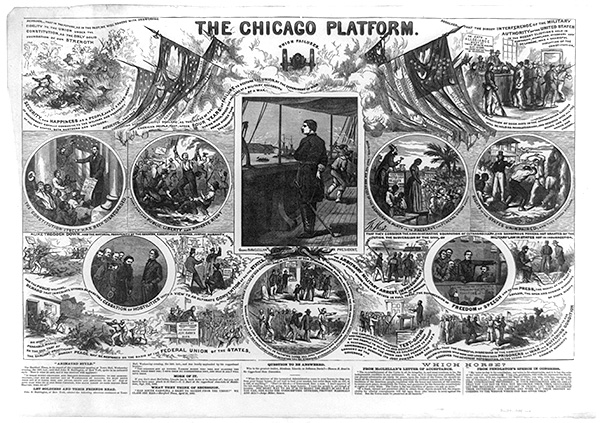This week, we take a look at the national platforms that were unveiled at both parties respective nominating conventions held last month. Every four years, leadership on both side drafts a new platform, an official document that details the party’s positions, ideology and ultimate goals.
A Little History
The first national platform was created in 1840, by members of the newly formed Democratic Party. It contained nine items (or “planks,” a term used to match the building metaphor) and fit onto a single page. You can read it here. While a platform is considered “nonbinding” (meaning, members are the party are not legally required to adhere to what it says), lawmakers tend to vote on legislation in line with its platform around 80 percent of the time. In addition, candidates can be greatly judged for going against adopted policy points. (George H.W. Bush famously enraged voters when he supported a tax hike in 1990, after adamantly claiming he would not.)
The Platform Committee for each party is made up of 112 convention delegates, one man and one woman represented from each of the states, plus five territories and the District of Columbia. The group typically starts with the most recent platform and make adjustments or additions based on shifts in policy and/or heightened priorities. Once completed, the platform is subject to a formal vote on the convention floor. If it is rejected (a rare occurrence), it is sent back to the committee for a revision and is returned for another vote. The platform must be approved before a candidate can officially receive the nomination.
Current Platforms
The divide between political ideologies has been growing in recent years and, as reflected in the 2016 Democrat and Republican platform, is a wide as ever. In general, the Democrats are more left-leaning than usual on some issues (like economic, perhaps reflecting the influence former candidate, Bernie Sanders). On the other side, many have called the GOP views “the most extreme in recent history.” We have attached links to the complete text of both for your complete review, as well as a summary of some of the highlights:



